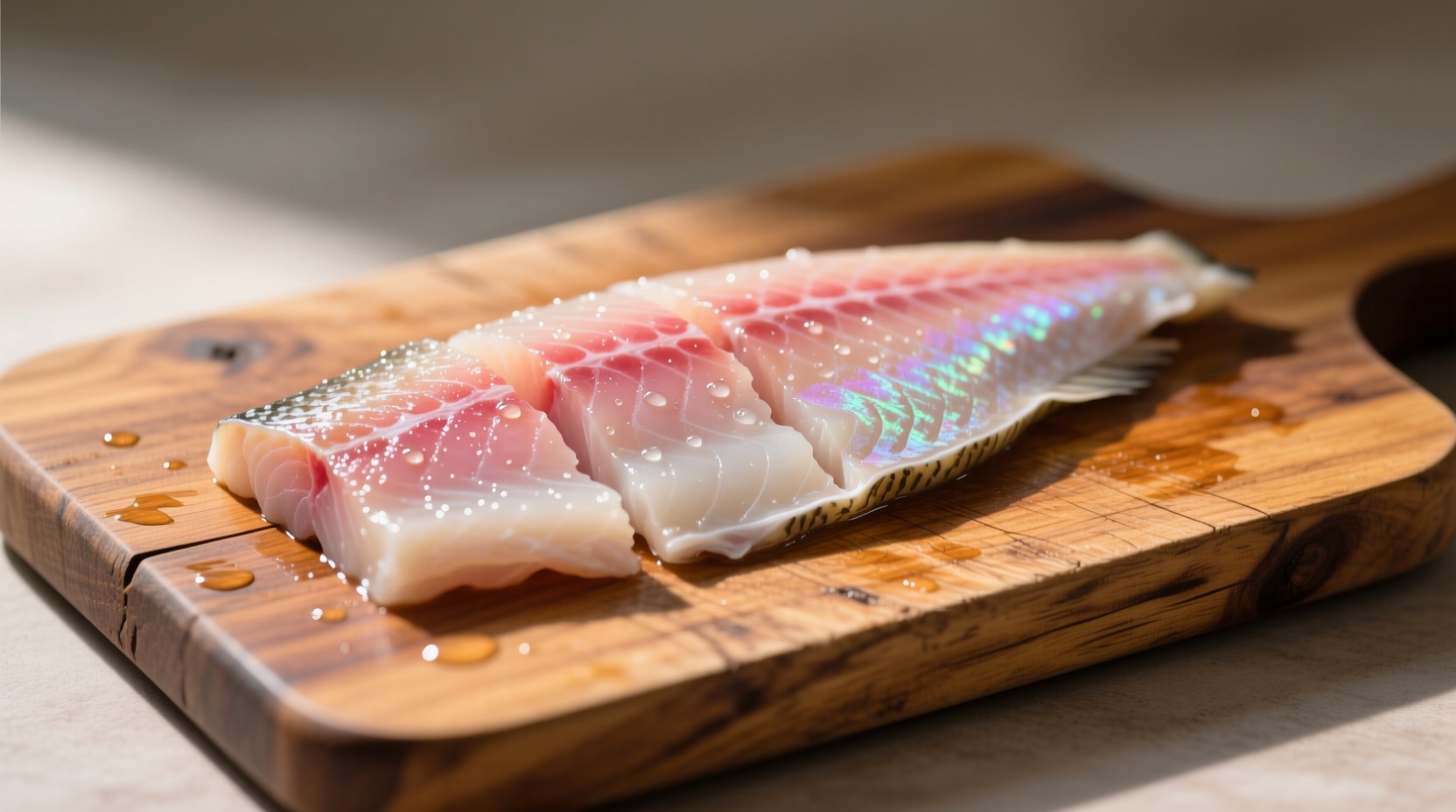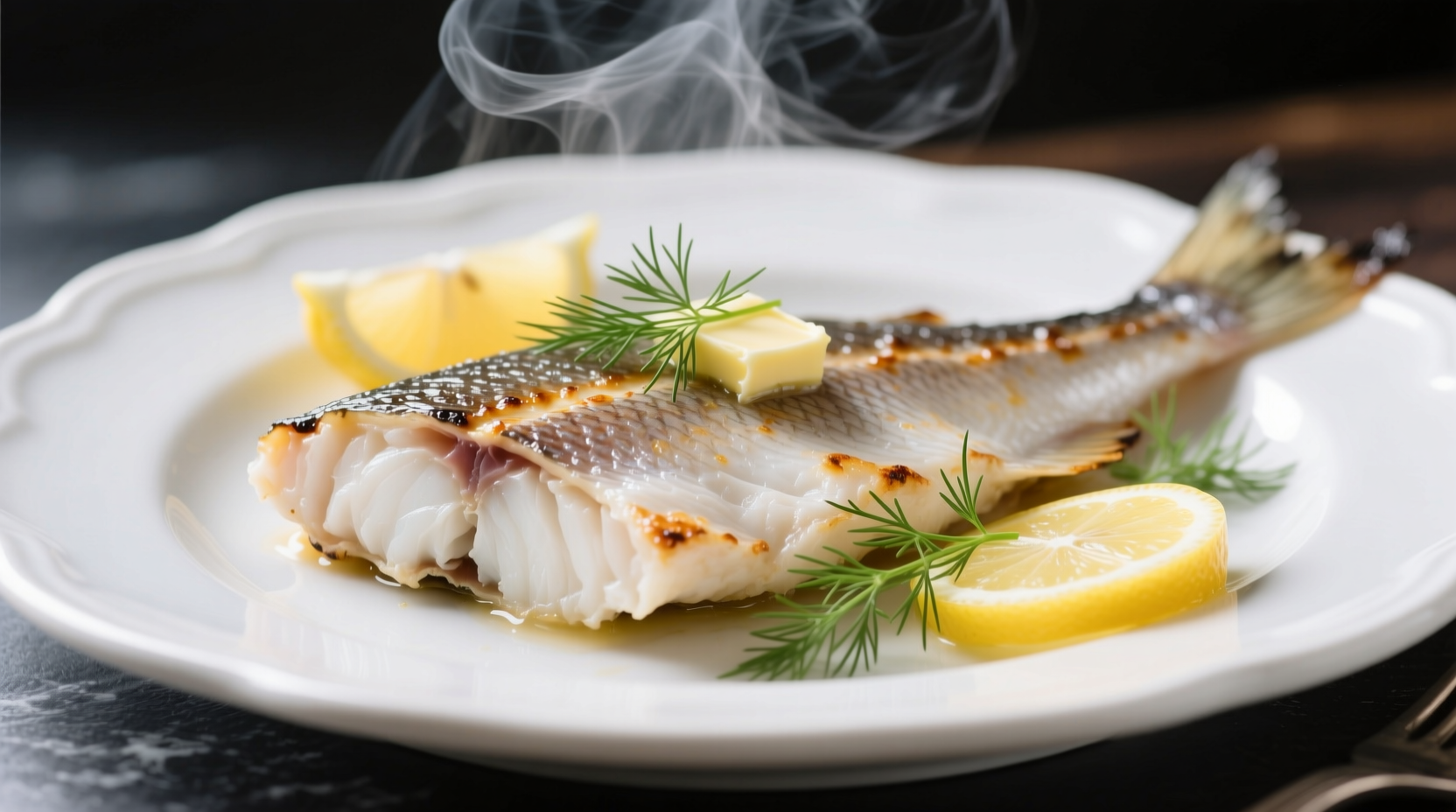If you've ever wondered what haddock tastes like before trying it, you're not alone. This popular North Atlantic fish has become a staple in seafood menus worldwide, yet many home cooks remain uncertain about its distinctive flavor profile. Understanding haddock's taste characteristics helps you make informed decisions when selecting fish for your recipes or ordering at restaurants.
The Complete Flavor Profile of Haddock
Haddock (Melanogrammus aeglefinus) delivers a clean, approachable seafood experience that appeals to both seafood enthusiasts and those new to fish. Unlike stronger-flavored options like mackerel or bluefish, haddock offers a subtle taste that serves as an excellent canvas for complementary flavors.
When properly prepared, fresh haddock provides:
- A mild, slightly sweet flavor with delicate ocean undertones
- Firm yet tender flaky texture that holds together well during cooking
- A clean finish without the oily aftertaste found in some fish varieties
- Natural moisture that prevents drying when cooked correctly
The fish's flavor can vary slightly based on its origin. According to the National Oceanic and Atmospheric Administration (NOAA), haddock from colder northern waters tends to have a slightly sweeter profile due to higher fat content developed for thermal regulation.

Haddock Compared to Other White Fish Varieties
Understanding how haddock tastes relative to other common white fish helps you make better culinary decisions. This comparison table shows key flavor and texture differences:
| Fish Type | Flavor Intensity | Sweetness Level | Texture | Best Cooking Methods |
|---|---|---|---|---|
| Haddock | Mild | Moderate | Firm, large flakes | Baking, grilling, frying |
| Cod | Very mild | Low | Soft, delicate flakes | Steaming, poaching |
| Halibut | Moderate | Low | Dense, meaty | Grilling, roasting |
| Tilapia | Very mild | Low | Soft, small flakes | Pan-frying, baking |
| Pollock | Mild | Low | Soft | Frying, baking |
How Cooking Methods Transform Haddock's Flavor
The preparation technique significantly impacts what haddock tastes like in your final dish. Unlike stronger fish that maintain their flavor through various cooking methods, haddock's mild profile makes it particularly responsive to different techniques:
- Pan-frying creates a delicate golden crust that enhances natural sweetness while preserving moisture
- Baking allows haddock to absorb surrounding flavors from herbs, citrus, and vegetables
- Grilling adds subtle smokiness that complements haddock's clean flavor without overpowering it
- Smoking transforms haddock completely, creating the distinctive flavor of traditional smoked haddock
According to culinary research from the University of Minnesota Extension, haddock's moderate fat content (approximately 1.5% compared to cod's 0.8%) helps it maintain moisture during cooking, preventing the dry, chalky texture that can occur with leaner white fish when overcooked.
Seasonal and Environmental Influences on Flavor
Haddock's taste isn't static throughout the year. The fish's diet and reproductive cycle create subtle seasonal variations:
- Spring (March-May): Leaner profile as fish prepare for spawning season
- Summer (June-August): Slightly richer flavor as feeding increases
- Fall (September-November): Peak flavor with optimal fat content before winter
- Winter (December-February): Milder taste as metabolic rates decrease in colder waters
Wild-caught haddock typically has a more complex flavor profile than farmed varieties due to their diverse natural diet. The Food and Agriculture Organization of the United Nations notes that wild haddock consume a varied diet of crustaceans, small fish, and mollusks, contributing to its distinctive yet subtle flavor.
Practical Tips for Selecting and Preparing Haddock
Maximize haddock's delicious potential with these professional recommendations:
Selection Guidelines
- Look for firm flesh that springs back when gently pressed
- Fresh haddock should have a clean, ocean-like aroma (never fishy or ammonia-like)
- Visible moisture should be clear, not cloudy or yellowed
- When possible, choose fish with the skin still attached for better freshness indication
Cooking Recommendations
- Cook to an internal temperature of 145°F (63°C) for perfect flakiness
- Pair with acidic elements like lemon or vinegar to enhance natural sweetness
- Complement with aromatic herbs like dill, parsley, or tarragon
- Avoid overpowering spices that might mask haddock's delicate flavor
Storage Best Practices
- Refrigerate immediately and use within 1-2 days of purchase
- Store on a bed of ice in the coldest part of your refrigerator
- Wrap tightly in moisture-proof material if freezing
- Thaw frozen haddock slowly in the refrigerator overnight
Why Haddock's Flavor Makes It a Kitchen Favorite
Haddock's balanced flavor profile explains its enduring popularity across culinary traditions. Unlike more assertive fish that dominate a dish, haddock plays beautifully with supporting ingredients while maintaining its own character. This versatility makes it ideal for:
- Family meals where varied palates need accommodating
- Dishes requiring subtle seafood flavor without overwhelming other components
- Recipes where the fish should complement rather than dominate
- Culinary applications needing a reliable, consistent flavor base
Professional chefs appreciate haddock's predictable cooking behavior and ability to absorb complementary flavors without losing its essential character. Whether you're preparing a simple weeknight dinner or an elegant seafood platter, understanding what haddock tastes like helps you leverage its strengths for delicious results.











 浙公网安备
33010002000092号
浙公网安备
33010002000092号 浙B2-20120091-4
浙B2-20120091-4